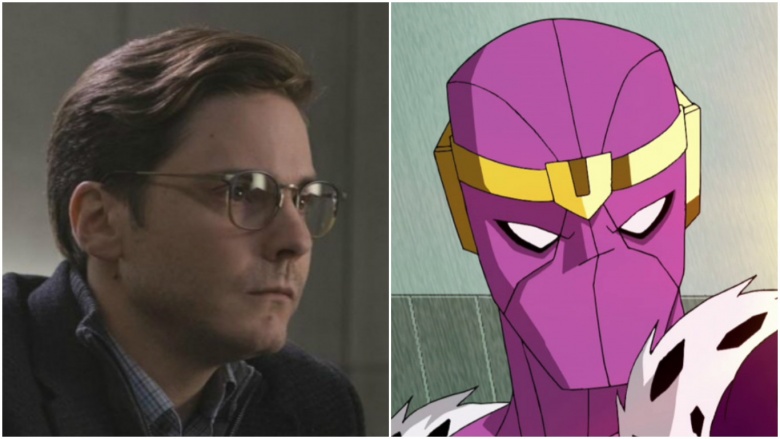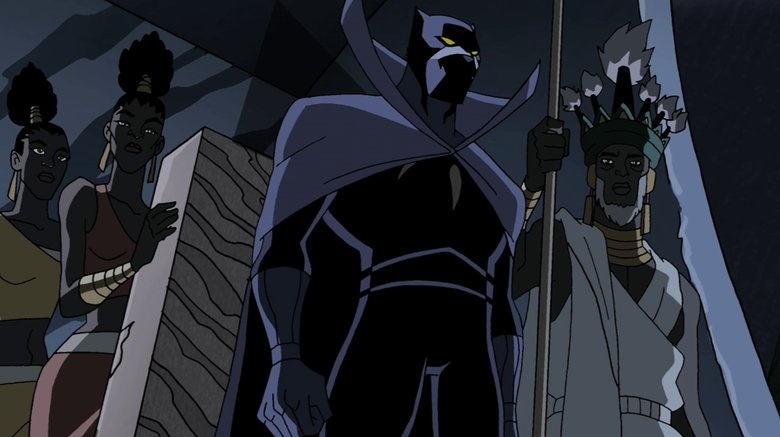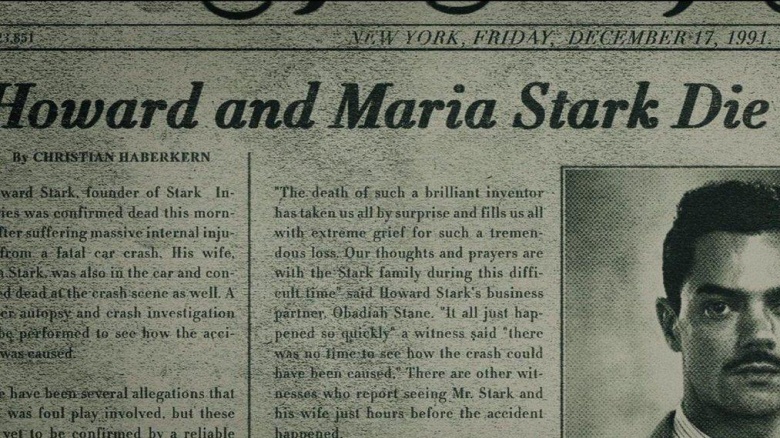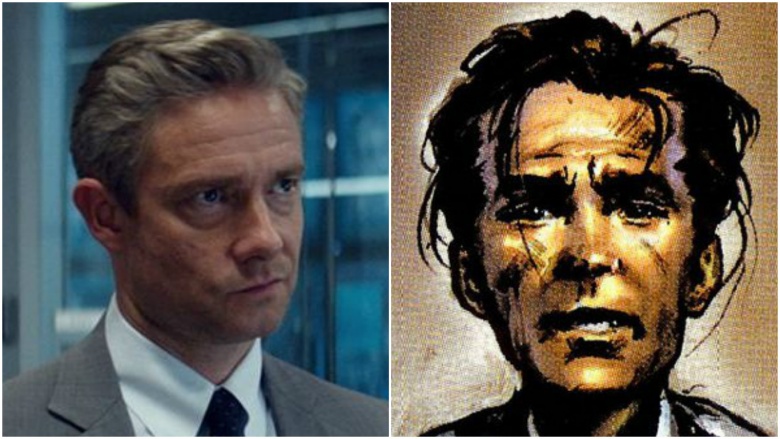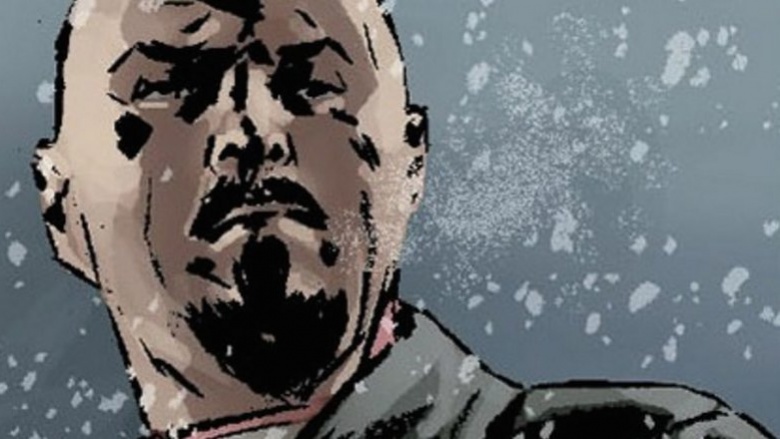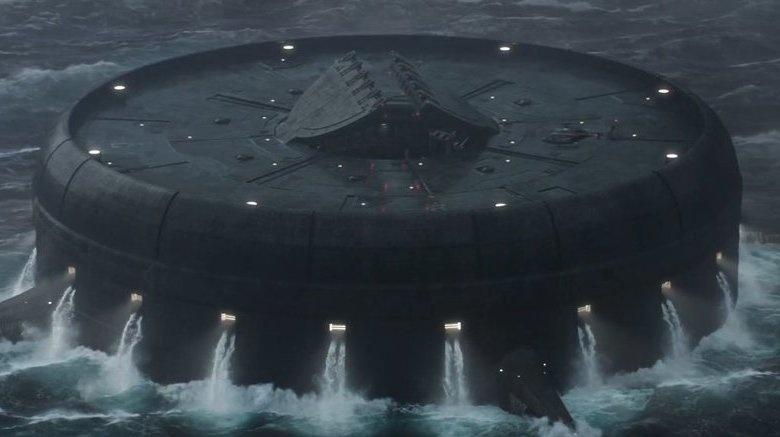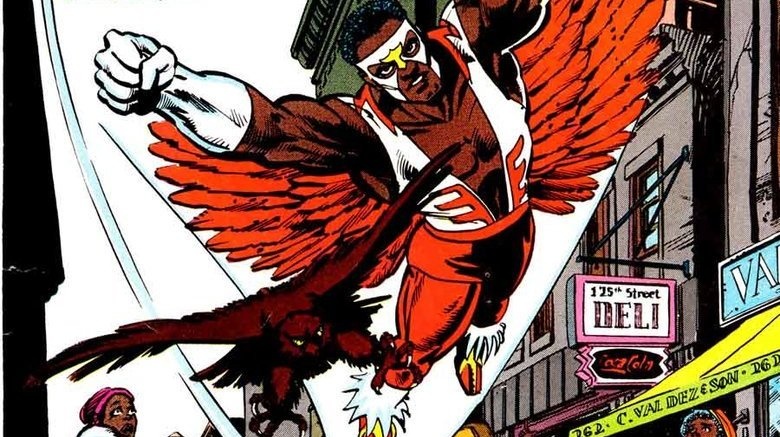Characters From Captain America: Civil War With More Meaning Than You Realized
When you're a comic book fan, one of the most enjoyably geeky parts of a superhero movie is seeing certain characters turn up or hearing particular names mentioned and giggling knowingly to yourself. (Elbowing the person next to you, however, is frowned upon.) When watching Captain America; Civil War, there are a few occasions which will warrant this sort of reaction, just as there are a few others which may inspire lengthy diatribes to your significant other—or possibly your pet—about how a particular character is far more important in the comics than they are in the film. Please be aware that in the following discussion of these characters, spoilers will be plentiful.
Zemo
In Captain America: Civil War, the central "bad guy," as it were, is a gentleman named Zemo, a fellow whose response to the devastation he feels after his family is accidentally killed during the course of the events in Avengers: Age of Ultron is to completely devastate the Avengers right back. In the comics, however, the name "Zemo" holds far more weight, as it's attached to Baron Zemo. Actually, make that Barons Zemo. First came Heinrich Zemo, a Nazi scientist whose claims to fame included the invention of a death ray and the wearing of a reddish-pink hood which was ultimately attached to his face permanently by another of his inventions, Adhesive X. Perhaps his most infamous accomplishment of all, however, was his responsibility for Captain America being frozen and positioning Bucky to become the Winter Soldier. Of course, that's not how things went down in the Marvel Cinematic Universe, but it shows you just how important Zemo has been to the Captain America mythos over the years. Indeed, in the comics, Heinrich Zemo spawned a son, Helmut Zemo, who continues to serve as a thorn in Cap's side even now.
T'Chaka
In Civil War, King T'Chaka of Wakanda exists as little more than a means to an end: when he's slain as a result of the explosion set off by Zemo and blamed on Bucky, T'Chaka's son, T'Challa, suits up as Black Panther and sets forth to avenge his father's death. T'Chaka actually made his comic book debut way back in 1966, in Fantastic Four #55, but there's something appropriate about him making his film debut in Civil War: in the 2010 miniseries Black Panther/Captain America: Flags of Our Fathers, it was established that Captain America fought alongside T'Chaka during World War II, when T'Chaka held the mantle of the Black Panther. It seems doubtful that they'll end up going down that road in the films, just as we'll have to live without the way T'Chaka met his end in the comics, which was at the hand of Ulysses Klaw, but we can surely count on learning a great deal more about this version of T'Chaka when we get the Black Panther film in 2018.
Maria Stark
Howard Stark has gotten a fair amount of screen time over the course of the various Marvel films and live-action series, but it took until Captain America: Civil War for viewers to actually see his wife Maria make it to the screen, portrayed by Hope Davis. Despite spending so much time as little more than a headline or offhanded reference in the MCU, in the comics, Maria's name has been uttered at some point by just about every hero who's ever held membership in the Avengers. For years, the stock line whenever there was any collateral crimefighting damage was, "Just send the bill to the Maria Stark Foundation." Maria's fictional biography is a little convoluted in the comics, with some significant differences between the original version of the character and the Ultimate Marvel version, but suffice it to say that her importance to the Iron Man mythos is far more significant than her fleeting appearance in Civil War—and the Marvel Cinematic Universe as a whole, for that matter—would have you believe.
Everett K. Ross
Like T'Chaka, it seems relatively certain that we'll end up getting to know government official Everett K. Ross, who turns up in Civil War as part of the Joint Counter-Terrorism Center and spends most of his time keeping moviegoers guessing about whether he's on Captain America's or Iron Man's side. In the comics, Ross works for the U.S. State Department and made his bones as a character when he was assigned to escort T'Challa while he was on U.S. soil. A quirky character, Ross was—according to Christopher Priest, the writer who created him—inspired by Chandler Bing, Matthew Perry's character on Friends. We didn't get a lot of laughs out of Ross in Civil War, but with Martin Freeman playing the part, we have no doubt they'll come if the writers opt to keep the character close to his comic-book incarnation.
Karpov
Vasily Karpov may not have had a huge part to play in Captain America: Civil War, but in the comics, he won't soon be forgotten: he was the man responsible for taking Bucky Barnes and reprogramming him to serve as the Winter Soldier. Before that, however, he had also been involved in an operation during World War II where he fought alongside Captain America and his WWI superteam, the Invaders, against the Red Skull and a Nazi super villain known as Master Man.
The Raft
Okay, fine, so this isn't so much a character as it is a thing. Still, we couldn't resist making note of the fact that the Raft, the island-esque prison where Cap's team end up being held after their capture, wasn't just a creation of the film. In the comics, however, it's located not too far from Ryker's Island, and it's home to some of the most despicable and powerful supervillains in the entire Marvel Universe. Now that its existence has been added into the cinematic proceedings, perhaps we'll see it used for some real villains the next time it turns up.
Redwing
This is, by far, our favorite inclusion on this list, and we offer it predominantly to explain why, when Sam Wilson, a.k.a. Falcon, mentions the drone that now accompanies him on missions and says its name is Redwing, a portion of the audience starts to laugh. Falcon's history in the comics is even more convoluted than Maria Stark's, so you'll just have to take us at our word on this or Google it yourself, but in a nutshell, the Red Skull used the Cosmic Cube to fuse the minds of Sam and his pet falcon, Redwing, creating a mental link between them. Yes, really. In fact, it eventually reached a point where Falcon was able to link up with other birds as well. It's one of those concepts that would never play as well on film as it does in the comics, so it's no wonder that they didn't actually give Sam a feathered sidekick, but you have to give them credit for still finding a way to give Falcon his Redwing.

